New evidence of baldness cure comes up short
A recent news story from a national newspaper emerged claiming “scientists studying cancer stumble on ‘breakthrough’ in search for baldness cure”. The report goes on to cite that “a cream or ointment may soon cure baldness or stop hair turning grey, as well as explaining why we age, one day”.
No one likes to be the bearer of bad news, but here at RESTRAND, we can confirm that these claims are falling short of their assertions (at this moment in time).

Looking into the research project a little further, it actually saw scientists conducting a study in mice, whereby they were looking into a rare genetic condition known as neurofibromatosis; a condition that causes tumours to grow along the nerves. During their research, they discovered the part a protein called KROX20 plays in our natural hair colour.
What is KROX20?
The KROX20 protein is created in specific cells within each and every single hair follicle. The KROX20 protein is also responsible for the production of another protein called SCF. It is the SCF protein that needs to be present to support the mature pigment-producing cells in the hair follicle. When it wasn’t produced, the mice lost their hair colour, ultimately becoming white. Furthermore, if the mice had little or no KROX20-producing cells, they were unable to create any new hair, which led to balding.
This is yet to be confirmed in humans cells, but the initial biology of cells in different mammals is quite precise in its similarity, so there’s every chance this could apply to us too.
As we mentioned, these new findings don’t automatically mean that the cure for greying hair and baldness is on the horizon.
The University of Texas was behind the research, with funding secured via a range of grants from the National Institutes of Health, in the United States.
The researchers were initially exploring neurofibromatosis; a condition that causes benign tumours, or neurofibromas, to develop in the sheath of nerves.
During the research, they stumbled across the fact that one strain of mice they’d genetically engineered to study this condition developed grey fur early in life. Once they had realised this interesting development, they carried out more experiments to look at why this could be, while also furthering their knowledge of the hair greying process we see in humans.
There is a long way to go, following their early findings, but it is thought that further studies will take place to decipher what can be found.
What’s next?
The research recognised a group of cells in the hair follicles of mice, and those cells play an essential role in forming the hair shaft to allow hair growth, as well as also aiding the maintenance of hair colour.
So far, this research has only been carried out in mice, although, as we mentioned earlier, the rudimentary biology of cells in mammals is very comparable, so it appears possible that the findings might also apply to humans.
So, we will all have to wait and see what the findings in the future will bring, which could be years in the waiting. For now, though, if you are coming to terms with changes to your appearance and are looking for a hair loss treatment you can trust, why not take a look at the products RESTRAND provide which can help you overcome those issues?
How to get thicker hair for men
Gradual hair thinning is a natural part of the ageing process, but some men as young as their teens and 20’s can experience male-pattern baldness. For most men, this can cause stress which can affect their self-esteem and stop them from enjoying everyday life. Luckily, there are many solutions and UK hair thickening products available to help naturally thicken hair.
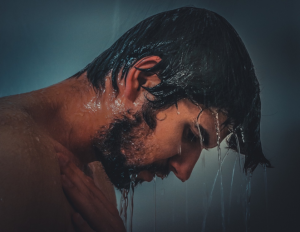
Nutrition
We all know that eating the right foods can work wonders on our bodies, but did you know that there some foods which can help make your hair thicker? Healthy hair can be achieved with a diet rich in certain foods, which are also of benefit to your overall health. Take a look at some of these foods below:
Avocado
Copper, found in avocado, is one of the best minerals for your hair and your skin. Copper can build up the collagen and elastin on the skin which holds hair to the follicle. This mineral can also help balance out hormones, so hair grows stronger and aids other reactions in the scalp that strengthens lipids in the hair. You can find copper in other foods like shellfish, beef, whole grains, dark leafy greens, nuts and even chocolate.
Pumpkin seeds
Full of zinc, pumpkin seeds help with cellular turnover, cell division and growth that helps form keratin, a protein that makes up hair. Zinc can also help preserve your hair colour and prevent you from experiencing dandruff. Pumpkin seeds can be easily added to salads or just enjoyed as a snack. You can also find other sources of zinc in beef, sesame seeds, lamb, oysters, lentils and chickpeas.
Whole grain cereals
Whole grain cereals are rich in iron, which is one of the most important minerals for your hair. Iron also increases energy levels, nourishes your skin and keeps your heart healthy, which are all important for overall health and wellbeing. As well as being found in wholegrains, beef, dark meats, chicken are also rich in iron.
Lentils and cashew nuts are plant-based sources of iron, but you should try to pair them with vitamin-C-rich foods like tomatoes, strawberries or kiwi which will help your body absorb the iron.
Don’t wash your hair too often
Try to keep your hair washing to a bare minimum. If your hair is thin, it will probably get greasy rather quickly, but washing your hair too often will only encourage your scalp to produce even more oil, therefore making it greasy quicker. This being said, it is still important not to let your hair get too greasy, as this can cause hair to shed more than usual. It is all about maintaining balance. Why not try this process when washing your hair?
- Mix rosemary oil, sunflower oil and jojoba oil together and let your hair soak in it. This mixture can stimulate cell division and dilutes blood vessels which in turn stimulates hair follicles.
- Leave the mixture in your hair for around an hour and then rinse it out using organic apple cider vinegar. The acidity of the vinegar will balance out your natural pH levels so that it won’t dry out your scalp like some shampoos do. This will leave your hair feeling soft and shiny, and it will also ensure that the oils will be rinsed out of your hair.
Look after your hair
Your hair needs to be looked after properly, and sometimes it is often overlooked. Below we have some tips to ensure you keep your hair nice and healthy.
- Avoid hot showers and shampoo your scalp, rather than your ends.
- If you condition your hair, only condition the ends.
- Pat your hair, don’t rub to dry it.
- Avoid over washing.
Just remember to eat right, and really take the time to look after your hair, and we are sure you will see the benefits. However, for faster results, we can help you get thicker hair that can give it added texture as well as added thickness with our Instant Hair Thickener. Why not take a look at our products online today?
6 weird and wonderful hair loss remedies from history
The thinning of hair, for both men and women, is nothing new. This has been occurring for thousands of years, but for those who do not find their bald patches or thinning regions overly dignified, ways to combat the problem have only relatively recently become viable.
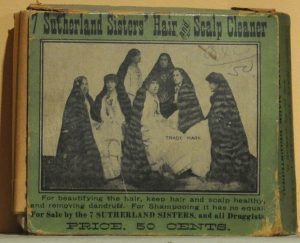
Treatments and preventions have always been available, as far back as 400 B.C., but of course, they have all had very ‘interesting’ levels of success, as you might expect. Fortunately, for those who are looking to hair thickening sprays today, there are wonderful options available to overcome the issue at hand. This got us to thinking about the weird and wonderful remedies that have arisen through the ages. We have listed six of them below, so why not take a look and see how it used to be done…
Tea
Tea. Yes, the quintessentially English beverage that is enjoyed in the thousands of cups-full, daily, was, in 19th-century England used as a hair loss treatment. Tea was used by people suffering from thinning hair by rub “cold India tea”, teamed with wedges of lemon, into their scalps. Did it work? We’re pretty sure you can guess the answer, which was a resounding no!
The Ancient Egyptian Solutions
For those enduring hair loss during the times of the Ancient Egyptians, there were, believe it or not, remedies on offer. The Ebers Papyrus, a medical text that dates as far back as 1550 B.C., highlights a host of recommended ‘cures’. A mix of fats from a tomcat, snake, hippopotamus, crocodile, and ibex was on option. Another was to use the leg of a female greyhound which had been sautéed in oil with the hoof of a donkey. Thirdly, they had the option to try a mixture of porcupine hair which was boiled in water then applied to the scalp for four days! Again, none of these were overly successful.
Hippocrates’ Theory
Hippocrates, a renowned historical figure, who was an ancient Greek physician born around 460 B.C., is regularly considered as the father of Western medicine. He personally suffered from male pattern baldness, and so prescribed himself, along with others with the same issue with a topical blend of spices, beetroot, opium, horseradish, and pigeon droppings. And guess what? Hairlines did not stop receding, post-potion.
Julius Caesar
When the famous dictator of Rome started losing his hair, he gave everything a go in order to try and reverse the effects of his balding. To begin with, he grew his thinning hair long at the back of his head and brushed it over his scalp in what was an early version of the comb-over. Following the failure of this idea, his lover Cleopatra suggested a home remedy consisting of horse teeth, ground-up mice, and bear grease. As you would expect, this did little for hair recuperation, and so the Roman dictator took to covering his scalp with a laurel wreath, which is widely seen in historical pictures of the leader.
Toupees
Popular in ancient times, hairpieces were revived during the 17th century by royals. King Louis XIII of France was one such royal who sported a toupee in order to hide his balding scalp. Massive wigs, often featuring elaborate curls that had been peppered with white powder, soon became all the rage among the noble figures in England and France. Wealthy American colonists took on the trend of donning this accessory as a status symbol up until the American Revolution, which killed off fashions with monarchy-inspired roots.
Snake Oil
In the United States, the 19th century witnessed the emergence of so-called “snake oil” salesmen. These people were, to every intents and purposes, swindlers masquerading as doctors who peddled sham potions that promised to treat all that ails you. A number of these tonics were cited to be formulated to reverse hair loss, including an ointment called Seven Sutherland Sisters’ Hair Grower, inspired and promoted by a family of sideshow performers with cascading locks.
Image: Joe Mabel under Creative Commons.
Why Hair Loss in Young Men Is Increasing And How To Solve It
If we looked back just a decade ago, the lion’s share of males who had a receding hairline were middle-aged men. However, in recent years, boys as young as 16 are reported to be seeking advice following worries of a receding hairline. This is backed up by the fact that doctors in India have cited that hair loss among young men is steadily increasing.
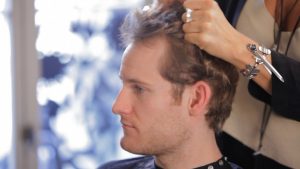
This is not an issue that seems to be fading, and now the issue is so bad that male hair loss was the big topic of a workshop that 300 dermatologists from all over India sat in on. The people who are at the top of their game all sat and discussed treatments such as hair transplants, laser hair removal and anti-aging therapies, with many voicing concerns that Male Pattern Baldness is showing signs of advancing by at least a decade. Quite shocking, if you weren’t already aware, don’t you think?
Head of Dermatology at Ahmedabad Civil Hospital, Dr Bela Shah, spoke to the India Times at the time, saying: “Earlier, one would get patients showing signs of baldness in their late 30s or early 40s. Now, we get teenaged boys, some still attending school.”
So, what is at the root of the rise in hair loss among young men?
The scientific reasoning behind this issue is that hair starts to thin and the hairline recedes as a result of levels of dihydrotestosterone (DHT) rising. This hormone imbalance is down to genetics, so there’s not much you can do about that. However, it can be enhanced if you are under stress because this sends a message to the genes triggering hair loss to occur at a younger age.
Is there a way to overcome Male Pattern Baldness?
The increase in the volume of young men who are going through hair loss has caused many to suffer from anxiety and reduced levels of confidence and self-esteem as a knock-on effect. It has even been said to be ruining the chances at marriage for some. Subsequently, there has been an increase in interest of methods for overcoming the issues these men are suffering from.
One of the ways that a lot of males look to solve the problem is opting for hair transplant surgery. However, this can be an expensive solution, and thanks to today’s technology, there is a host of other techniques and products that can be used to help men deal with their loss of hair. For example, hair thickener products can do wonders, and this is an option that is perfectly discreet. This organic, coloured hair thickener can be sprayed directly onto the hair giving the user instant thickening!
How does this work?
Hair Thickener works by covering the scalp and hairs with a fine layer of liquid powder which bonds to the hair strands, thickening them. This results in the appearance of a thicker, fuller head of hair. What’s more, for those who do use the hair transplant route, once any scarring has healed hair thickener can be used to complement the end-product.
If you are one of the thousands of men who are silently continuing to live their lives unhappy with their appearance, then why not try a thickening spray and see what the results can do for you?
Common misunderstandings about hair loss explained
The loss of hair is a hot topic among men of many ages and walks of life. There have been all kinds of myths and misunderstandings that have evolved and formed from Chinese whispers, but it’s more than reasonable to say that the vast majority are unfounded and can easily be debunked.
So, given that our spray on hair products are on hand to help overcome the real issues men are facing, and that we know our stuff, why don’t we run through a handful of the most common misunderstandings about hair loss, and explain them? This should help to clear up some of the confusion around them, and hopefully, people can move on!
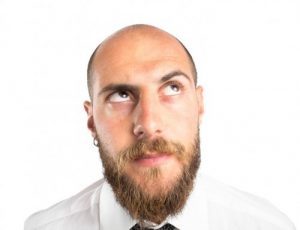
Hair loss is a result of malnutrition
In the UK and as a whole, in the Western world, you’ll find that it’s particularly difficult to find yourself at such a level of deficiency in vitamins that your hair begins falling out. Essentially, to lose your hair due to vitamin deficiency, you would have to be so severely deficient in a certain vitamin that you would be experiencing other problems that would certainly be noticeable, as well as/other than your hair.
This basically means that your hair is not being lost because you aren’t eating correctly, although a poor diet won’t do you any favours.
Hair loss is caused by wearing hats
A popular misconception is that by wearing a hat, you are causing excessive friction on your head which can lead to hair loss. We can tell you that you need not worry, this is simply not the case. If any hairs do fall out while you’re wearing a hat, it will likely be temporary.
What we would say is that anyone who continually wears a hat should be aware of any impending damage to the hair strands themselves, which can occur, making any thinning more apparent.
Hair loss is passed down from your mother’s side
This is a kind of half-truth, but you shouldn’t be blaming you mother! In fact, hair loss genetics are a slightly more complex. We’ve simplified it as best as we can; The X chromosome from the mother does actually carry the primary genetic factor. However, experts have stated following recent research that baldness in your dad could indicate whether or not you will start to bald.
Hair loss is only common in older men
Hair loss frequently starts in men as young as those in their 20s but is not restricted to men of a certain age. The myth is well and truly fiction when it comes to the thought that hair loss is only common in older men. You can find out more about the increase in hair loss in younger men in our previous article.
Hair loss is caused by clogged pores
One that regularly crops up is that if your pores are clogged, it can lead to hair loss. Where we think people have gotten confused is the fact that clogged pores cause acne, not hair loss. Medical professionals will back this up, so you can rest assured that this is not a reason why you might be having hair loss.
Points to take away
It’s worth remembering that the majority of hair loss is a natural occurrence; it is genetic, and no matter how hard we try to convince ourselves, the onset of hair loss or a receding hair line is just not preventable. However, there are many great ways to overcome any issues that arise. Using our hair thickening spray and other similar products can help you conceal ongoing hair loss or thinning hair.
There is no known cure for hair loss. There’s every chance that you could risk tens of thousands of pounds on a risky hair transplant, for which you will also need to take hormone-suppressing drugs. So until there is a viable, cost-effective cure you can use a hair loss concealer.
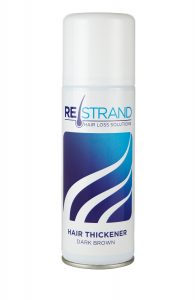

Recent Comments